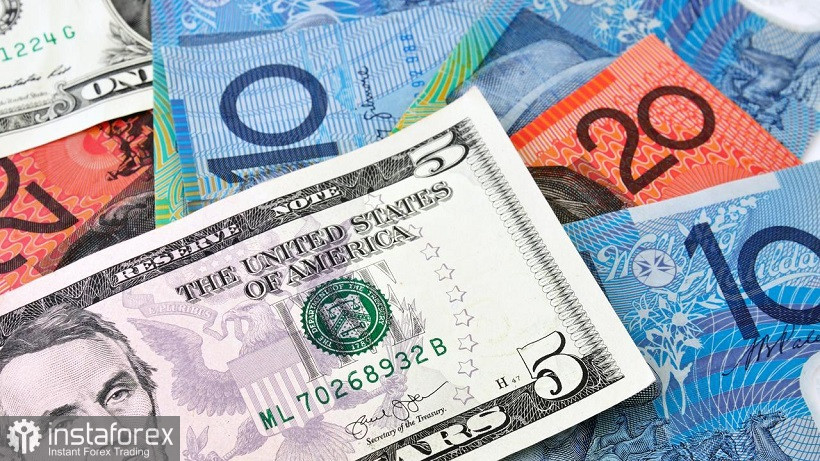The Australian dollar continues to dive down: paired with the greenback, it has already updated 2.5-year price lows, settling within the 62nd figure. The last time the price was at such lows was in April 2020, responding to the coronavirus crisis. However, this comparison is not entirely correct. In the spring of the 20th, the pair impulsively collapsed to the level of 0.5510, but then recovered quickly enough, literally in two weeks.
This year, the situation is completely different. We are dealing with a protracted downward trend: the Aussie is slowly sliding down, demonstrating very large-scale upward pullbacks. In the middle of summer, AUD/USD hovered around the 0.70 mark for several weeks, and in early autumn it got stuck in the range of 68–69 figures. But if we look at the monthly chart of the pair, we will see that the downward trend is very pronounced, especially if we consider the period from August this year. If at the end of summer the Aussie tried to claim the 72nd figure, today the pair is trading around the 0.6260 mark. Almost 1,000 points in 2.5 months! And this despite the fact that the Reserve Bank of Australia showed a hawkish attitude in the second half of the year, raising interest rates four times by 50 points.

In the last few weeks, the downward trend of AUD/USD has only intensified. The Australian dollar has ceased to enjoy support from the RBA, which disappointed buyers of the pair at its last meeting, reducing the pace of monetary tightening. After this event, the fate of AUD/USD was a foregone conclusion: there were no restraining factors for further price reduction. The only hope for the pair's bulls is the weakening of the greenback. But judging by recent events, the US currency does not intend to give up its positions—both due to the strengthening of hawkish expectations regarding the further actions of the Fed and the strengthening of anti-risk sentiment in the markets. As a result, we have a unipolar picture of a fundamental nature, which opens the way for the AUD/USD bears at least to the bottom of the 62nd figure.
Recall that at the October meeting, the Reserve Bank of Australia raised the interest rate by only 25 points, although most experts predicted a 50-point increase. By and large, the regulator over the past few months has been veiledly warning that it intends to slow down the pace of monetary tightening. But apparently, the central bank was not direct enough in expressing its hints, since the baseline scenario for the October meeting assumed the fifth rate increase by 50 basis points. The regulator did not justify these hopes and increased the rate by only 25 points. At the same time, it clarified that it would continue to adhere to the 25-point step, at least for the remaining two meetings this year.
Initially, the market reacted rather reservedly to the de facto "dove" results of the October meeting of RBA members. The AUD/USD pair formally fell by several tens of points, but then froze in a flat. However, this phlegm was due solely to the weakening of the greenback. The US dollar index at that time sank significantly against the background of the publication of a failed report on the growth of the ISM index (the probability of a 75-point rate hike in November then dropped to 49%).
But after the US currency regained its positions, the AUD/USD pair rolled down as expected. First of all, due to the expansion of the divergence of the monetary policy rates of the two regulators, the Fed and the RBA. Strong non-farm payrolls and hawkish comments from several Fed representatives changed the mood of investors. According to the CME Group's FedWatch Tool, there is now almost an 80% chance of a 75-point rate hike at the November meeting. If inflation reports this week (producer price index and consumer price index) exceed the forecast levels, this probability will exceed the 90 percent mark. The chances of a 75-point rate hike following the December meeting will also increase.
Thus, the existing fundamental background contributes to the further decline in the price of AUD/USD. Secondary factors also play their role—and again not in favor of the Australian dollar. For example, yesterday, the AiG index of activity in the services sector was published. The indicator fell to 48 points (the worst result since October 2021). Westpac's Consumer Confidence Index (down to 83 points) and NAB's Business Confidence Index (also negative dynamics down to 5 points) were released today.
The US dollar, in turn, received support yesterday from Fed Vice Chair Lael Brainard, who said the regulator will continue to "confidently tighten" monetary policy "until there is clear evidence of a slowdown in inflation."
All this suggests that short positions on the AUD/USD pair are still relevant. Any corrective upward pullbacks should be used as a reason to enter sales. From a technical point of view, the AUD/USD pair on the D1 timeframe is between the middle and lower lines of the Bollinger Bands indicator, as well as under all the lines of the Ichimoku indicator, which demonstrates the bearish Parade of Lines signal. All these technical signals also indicate the priority of the downward movement. The first and so far the main target of the downward trend is located on the lower line of the Bollinger Bands indicator on H4, that is, at around 0.6200.





















